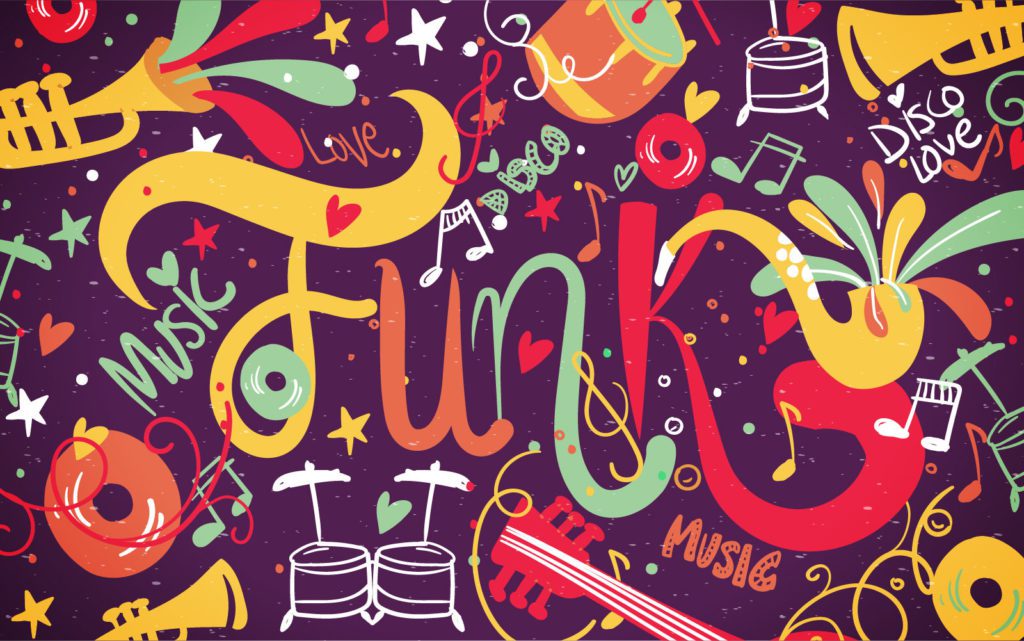The Beginning of Funk
Party music, later referred to as Funk, became popular in the 70’s although emerged in the late 1960’s. Using elements from jazz, soul, rhythm and blues, Funk is an urban form of dance music. The intertwining of many different instruments in order to create a hypnotic beat is what gives Funk music its “groove. Just like previous African American music forms, the lyrics of Funk music are drowned in the experiences and views of the black population. Funk songs encouraged blacks, a minority group yet lacking togetherness, to join forces, relax, and enjoy the lives even if they came from poor or working backgrounds.
P-Funk
George Clinton introduced P-Funk or Parliament-Funkadelic. This consisted of two sister groups, Parliament and Funkadelic, each with their own unique fashion, psychedelic culture, and science fiction based humor. While Parliament initially gravitated toward a more commercial form of funk, Funkadelic embraced the influence of psychedelic rock. The term P-Funk was used to describe this mixing of these two styles and went on to classify many popular funk artists and groups.
James Brown
- Known as the Godfather of Soul and Pioneer of Funk music, starting the evolution of funk
- Social activist who expelled some racial barriers in music and the communities he influenced, civil rights funk anthem “Say it Loud — I’m Black and I’m Proud”
- Distinguished funk from rock, soul, and R&B
Sly and The Family Stone
Sly and the Family Stone was the first major funk group to be racially integrated in addition to including men and women musicians. With their psychedelic rock sound, they showed togetherness and unity in their music. They also take credit for trends like bell bottoms, afros, cow skin and outrageous jewelry.


